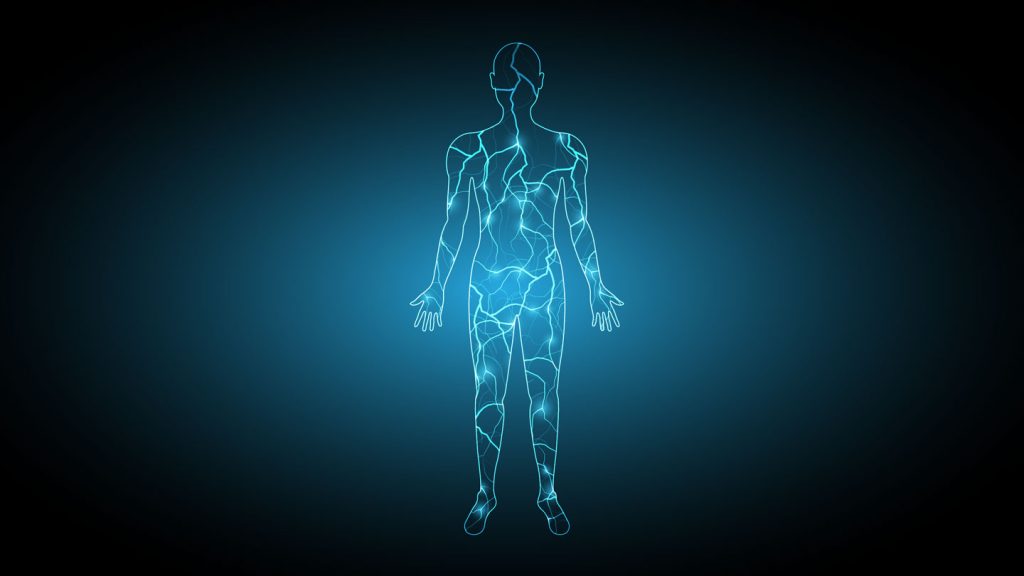‘We Are Electric’ delivers the shocking story of bioelectricty

It took just a 9-volt battery and a little brain zapping to turn science writer Sally Adee into a stone-cold sharpshooter.
She had flown out to California to test an experimental DARPA technology that used electric jolts to speed soldiers’ sniper training. When the juice was flowing, Adee could tell. In a desert simulation that pit her against virtual bad guys, she hit every one.
“Getting my neurons slapped around by an electric field instantly sharpened my ability to focus,” Adee writes in her new book, We Are Electric. That brain-stimulating experience ignited her 10-year quest to understand how electricity and biology intertwine. And she’s not just talking neurons.
Bioelectricity, Adee makes the case, is a shockingly underexplored area of science that spans all parts of the body. Its story is one of missed opportunity, scientific threads exposed and abandoned, tantalizing clues and claims, “electroquacks” and unproven medical devices — and frogs. Oh so many frogs.
Adee takes us back to the 18th century lab of Luigi Galvani, an Italian scientist hunting for what gives animals the spark of life. His gruesome experiments on twitching frog legs offered proof that animal bodies generate their own electricity, an idea that was hotly debated at the time. (So many scientists repeated Galvani’s experiments, in fact, that Europe began to run out of frogs.)
But around the same time, Galvani critic Alessandro Volta, another Italian scientist, invented the electric battery. It was the kind of razzle-dazzle, history-shaking device that stole the spotlight from animal electricity, and the fledgling field fizzled. “The idea had been set,” Adee writes. “Electricity was not for biology. It was for machines, and telegraphs, and chemical reactions.”
It took decades for scientists to pick up Galvani’s experimental threads and get the study of bioelectricity back on track. Since then, we’ve learned just how much electricity orchestrates our lives, and how much more remains to be discovered. Electricity zips through our neurons, makes our hearts tick and flows in every cell of the body. We’re made up of 40 trillion tiny rechargeable batteries, Adee writes.
She describes how cells use ion channels to usher charged molecules in and out. One thing readers might not expect from a book that illustrates the intricacies of ion channels: It’s surprisingly funny.
Chloride ions, for example, are “perpetually low-key ashamed” because they carry a measly -1 charge. Bogus medical contraptions (here’s looking at you, electric penis belts) were “electro-foolery.” In her acknowledgements, Adee jokes about the “life-saving powers of Voltron” and thanks people for enduring her caffeine jitters. That energy thrums through the book, charging her storytelling like a staticky balloon.
Adee is especially electrifying in a chapter about spinal nerve regeneration and why initial experiments juddered to a halt. Decades ago, scientists tried coaxing severed nerves to link up again by applying an electric field. The controversial technique sparked scientific drama, but the idea of using electricity to heal may have been ahead of its time. Fast-forward to 2020, and DARPA has awarded $16 million to researchers with a similar concept: a bioelectric bandage that speeds wound healing.
Along with zingy Band-Aids of the future, Adee describes other sci-fi–sounding devices in the works. One day, for example, surgeons may sprinkle your brain with neurograins, neural lace or neural dust, tiny electronic implants that could help scientists monitor brain activity or even help people control robotic arms or other devices (SN: 9/3/16, p. 10).
Such implants bring many challenges — like how to marry electronics to living tissue — but Adee’s book leaves readers with a sense of excitement. Not only could bioelectricity inspire new and improved medical devices, it could also reveal a current of unexpected truths about the body.
As Adee writes: “We are electrical machines whose full dimensions we have not even yet dreamed of.”